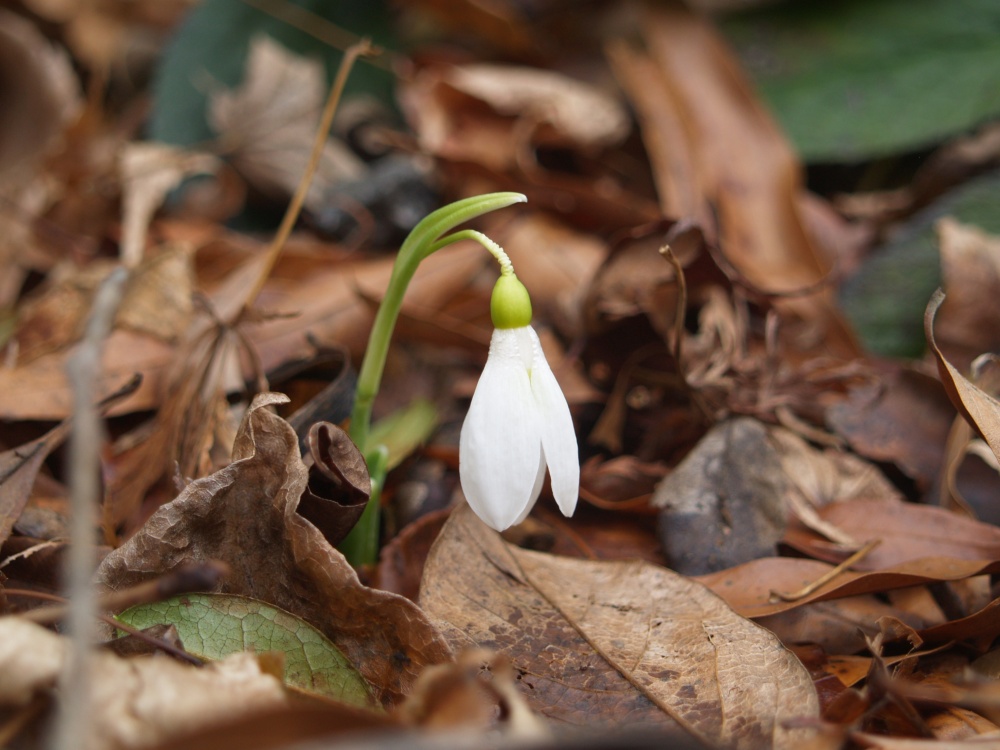
Following days of cold and a bit of snow and ice (though hardly enough to be disturbed about), the yellow, winter flowering mahonias (‘Winter Sun’ and ‘Charity’) have finally faded from bloom. Vernal witch hazel (Hamamelis vernalis) and a few early snowdrops (Galanthus, above) continue to flower, and these will continue through until the now fat buds of hellebores and hybrid witch hazels open in a few weeks.

There will not be a day this season when something, and usually several somethings are not flowering, but still, evergreen foliage is most notable through the winter months. The hollies (Ilex), cryptomerias (Cryptomeria japonica), and Alaskan cedars (Xanthocyparis nootkatensis) command the most attention with their size (and berries on hollies, above), but several smaller evergreens capture the eye in January.

Though smaller than the cryptomerias and cedars, the Japanese Umbrella pines (Sciadopitys verticillata, above) attract the attention of occasional winter visitors to the garden. The texture provided by the thick, glossy, dark green needles is unlike nearby pines and spruces, and even non gardening types inquire about them. The Umbrella pine is certainly slow, but in this long established garden scrawny three footers have grown to almost twenty feet tall. In recent years a few branches were lost to heavy snow and ice, but mostly the flexible branches bounce back once the load is lightened. On these densely branched trees no damage is evident, a few months or a few years after a storm.

Against the gray and mostly barren landscape, variegated foliage stands out that is not so obvious once the garden is filled with flowers. Though ‘Carol Mackie’ (Daphne x burkwoodi ‘Carol Mackie’, above) is almost fully deciduous in a winter when temperatures dip below ten degrees, the foliage of variegated Winter daphne (Daphne odora ‘Aureomarginata’, below) is most notable in winter. A year ago foliage and flowers were injured in sub zero cold, but these are in fine health this winter, though the flower buds have not yet begun to open as they often do late in January. A week above freezing should get them started. (As a side note, one Daphne ‘Eternal Fragrance’ has been stomped on and broken, presumably by deer. These are slow growing enough without their assistance. Two others are budded and I suppose these will flower with a week of average temperatures.)

Landscape designers seem enthralled by the variegated dog hobble ‘Rainbow’ (Leucothoe fontanesiana ‘Rainbow’), but I’m more enthused with the less common variegated version of Coast leucothoe (Leucothoe axillaris ‘Variegata’, below) that is colored only along the leaf’s margins. ‘Rainbow’ and ‘Dodd’s Variegated’ are splashed with irregular variegation that is too muted to show distinctly, to my thinking. Most everyone prefers these, so ‘Variegata’ is rarely seen, though none of the three leaps out at you as far as I’m concerned. ‘Variegata’ is pleasant enough (as all dog hobbles are) when flowering, but in January the foliage and pink flower buds are appreciated a bit more than when other shrubs outshine them later in the spring.


I don’t know if ‘Little Heath’ pieris (Pieris japonica ‘Little Heath’, above) is named for its more compact size or small leaves, but this delicate looking andromeda is a marvelous deer resistant evergreen when it is provided with the proper growing conditions. Many andromedas are finicky about being planted in soil that is not exceptionally well drained, and from the start I presumed that ‘Little Heath’ would be pickier than most, just by its appearance. In a mounded bed two of three have performed well, and the other might make it, or not. Several other andromedas are more sturdy and tolerant of less than ideal conditions, and these should be at the top of any list. But, ‘Little Heath’ has its charms through late winter and early spring.